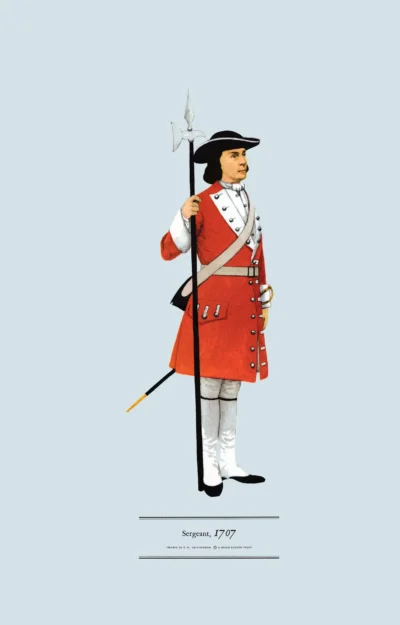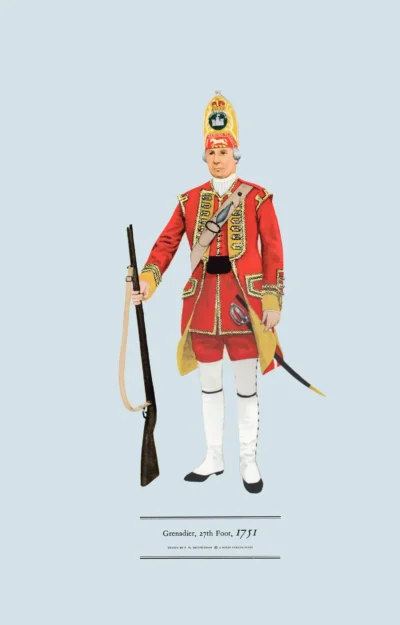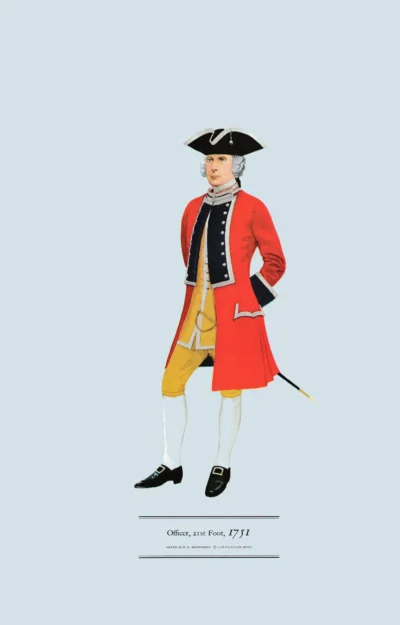Officer, 21st Foot, 1751 (Royal Scots Fusiliers)
£12.50
The Royal Scots Fusiliers merged into The Royal Regiment of Scotland in 2006 (scroll down for a more detailed Description)
Published 1965 by © Hugh Evelyn Limited; drawn by Colonel Philip Henry Smitherman (1910-1982), Royal Corps of Signals
Size: c. 24.5 x 37.5 cm [9 ½ ″ x 14 ½ ″] (may vary slightly from printers’ cut 50 years ago)
Printed on on medium cardstock weighing 144 g/sm2 faced in light greyish blue (RGB c. d4e1e8)
Print is STANDARD size – shipping is the same for 1 to 10 prints (based on largest print size in your order) – see Shipping & Returns.
In stock
Description
An officer in undress uniform, worn off duty or on social occasions. As the 18th century progressed wearing uniform became more popular. Officers are seen in uniform in family pictures unlike earlier years. So, the cut and design of officers’ coats became more elegant. The 21st Foot (later the Royal Scots Fusiliers) were raised in 1678, the first fusilier regiment in the army. As firearms replaced the pike so regiments were raised equipped completely with firearms. Several fusilier regiments were raised at this time, equipped with fusils – a light, more efficient and more expensive form of flintlock used by musketeers of other regiments. These were regarded as picked regiments with the same privileges as dress grenadiers: mitre caps and elaborate coats. With one exception, they shared the privilege of the ‘Six Old Corps’ in wearing their own regimental badge on their caps instead of the royal cipher. This officer wore a mitre cap and carried a fusil on duty, turned the skirts of his coat back, carried a cartouche, and had a ring bayonet in a frog above his sword. There is evidence that grenadier officers (and possibly fusilier officers) sometimes went into battle dressed as this officer is – armed with his fusil. On their mitre caps the regiment displayed a device incorporating the cross of Saint Andrew and the thistle, indicating their Scottish origin. They did not assume Scottish dress until 1881 and following amalgamation are today part of the Royal Regiment of Scotland (2 Scots).
Source: Portrait of Major Sandilands, by Allen Ramsay (1713-1784).
Additional information
| Weight | 0.0131 kg |
|---|---|
| Dimensions | 23 × 37 cm |





